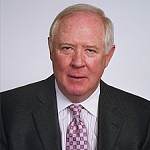Learning agility is finding yourself in a new situation and not knowing what to do – but then figuring it out.
Why would that be important? In an organizational context, if you are promoted from one function to another or from an individual contributor to a manager role, how do I know you will be successful? The answer is that I don’t. You’ve never done this job before. The research says if leaders make that decision without the help of an assessment process, the odds of the person being successful is 50-50 – essentially the flip of a coin.
What is the cost if the coin lands on the side of being unsuccessful? It depends, but the range is anywhere from 50 to 150 percent of that person’s fully-loaded pay (including compensation and benefits).
Most organizations use a performance management system to give employees feedback on their performance and to equitably distribute merit increases. The output of this process is supposed to be a development plan, which describes the key objectives a person should achieve in the coming year and areas he or she should begin tackling or improve on. Theoretically, this process is what all employees can expect.
Some companies put additional time, effort and money into critical jobs and/or high-potential employees. There are different definitions of high-potential employees, a common one being a person with the ability to be promoted two levels above his or her current level – for example, a manager with the ability to be promoted to a vice president.
You can’t spend significant additional dollars on everyone, so to whom do you give this time and attention? That is the $64,000 question.
One answer is to spend the time on the most learning-agile person. But how do you determine learning agility? That question has stumped people in talent management for some time. My favorite response is, “Those who can learn on the fly.”
How do you operationalize that definition? What would I see a learning-agile person doing? How would I teach someone who wasn’t doing that what he or she needed to do? These questions are where learning agility becomes more complicated.
Researcher Scott DeRue at the University of Michigan established a model that identifies speed and flexibility as the two most important factors determining learning agility. Learning agility is about being able to digest a large amount of information quickly (speed) and figure out what is most important. DeRue also said you need to be able to change frameworks (flexibility) that help you understand how different things are related or connected. In other words, flexibility is about being able to change frameworks as necessary to explain what is going on.
DeRue also made a distinction between learning agility and learning ability. “Ability” means cognitive ability or “smarts.” Ability is important to a point, but then, smarter is not necessarily better. Earlier, I noted that learning agility is being in an unfamiliar situation, not knowing what to do and figuring it out. Ability takes you to a certain point. Then, agility becomes more important.
DeRue says there are both cognitive and behavioral components to learning agility. The cognitive ones – the “hard wiring,” if you will – are difficult, if not impossible, to change. The behavioral ones are more learnable, because if you do the things described by the behavior, then you are demonstrating that part of learning agility.
Another researcher, Dr. Warner Burke from Columbia University, confirmed what DeRue described and found seven additional dimensions of learning agility. He embraced speed and flexibility, but his research also identified experimenting, performance risk-taking, interpersonal risk-taking, collaborating, information-gathering, feedback-seeking and reflecting. Burke also developed a test to measure learning agility, and his work led to a valid and reliable tool with years of research to support its results. This is a huge step beyond the 50/50 coin flip to determine who we develop and promote.
In future blog posts, I will take a deeper dive into learning agility and look at what precedes it, what impedes it and how you can develop it.







